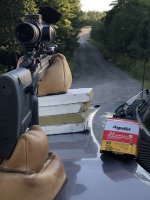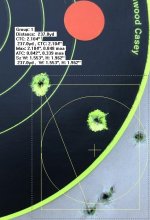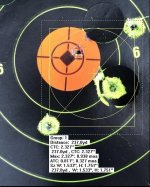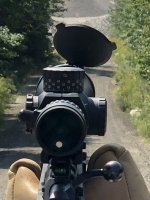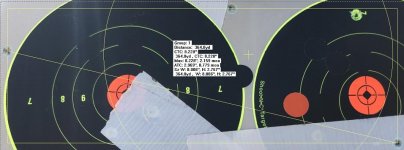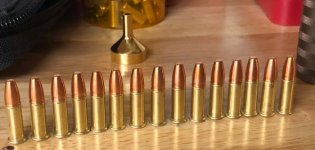stagpanther
New member
22lr is like a box of chocolates--you never know what you're going to get
This thread is an example of why I like this forum--it inspires me to try new things for the fun of it. Yesterday was the first time I shot conventional factory 22 lr past 100 yds--120 to be exact--and today I almost doubled that to 237 yards. All I ever cared about was tiny groups at 50 yds.
On the menu was Norma TAC 22, Ely pistol match (it's all I had from Ely), winchester power point, my CZ 457's favorite; RWS R-50 and Aguila super extra.
Nothing seemed to perform the way I assumed it would. Faster ammo didn't necessarily impact higher on the target. from what I've read, slower ammo that didn't go transonic tended to be more accurate at longer distances. the logic of that eludes me--unless it has more to do with maintaining bullet stability more easily. I didn't see that today either as the faster stuff seemed to do better than the slower stuff.
I cut back my group sizes to 5 shots because I simply didn't have the concentration to make it through larger groups. The pistol stuff was a mistake--it wouldn't even feed from the magazine and the group size was in feet. I guess I should have paid attention to the "pistol" part. The rest of the ammo grouped around 4 to 5 inches, including my favorite R-50 which I expected would group far better than all the rest of the factory ammos.
I have a box of aguila super extra and wasn't even going to shoot it--it has never shot worth a poop in my CZ jaguar at shorter distances but decided to give it a try before I packed up for the day just for the heck of it. I was pretty shocked when the first group came in under MOA--just to make sure I shot a second group which also came in under MOA--I think. I thought I loaded 5 into the magazine but either missed one or pulled a shot so badly it went sailing far of the target, I couldn't find a fifth impact that correlated to this group.



This thread is an example of why I like this forum--it inspires me to try new things for the fun of it. Yesterday was the first time I shot conventional factory 22 lr past 100 yds--120 to be exact--and today I almost doubled that to 237 yards. All I ever cared about was tiny groups at 50 yds.
On the menu was Norma TAC 22, Ely pistol match (it's all I had from Ely), winchester power point, my CZ 457's favorite; RWS R-50 and Aguila super extra.
Nothing seemed to perform the way I assumed it would. Faster ammo didn't necessarily impact higher on the target. from what I've read, slower ammo that didn't go transonic tended to be more accurate at longer distances. the logic of that eludes me--unless it has more to do with maintaining bullet stability more easily. I didn't see that today either as the faster stuff seemed to do better than the slower stuff.
I cut back my group sizes to 5 shots because I simply didn't have the concentration to make it through larger groups. The pistol stuff was a mistake--it wouldn't even feed from the magazine and the group size was in feet. I guess I should have paid attention to the "pistol" part. The rest of the ammo grouped around 4 to 5 inches, including my favorite R-50 which I expected would group far better than all the rest of the factory ammos.
I have a box of aguila super extra and wasn't even going to shoot it--it has never shot worth a poop in my CZ jaguar at shorter distances but decided to give it a try before I packed up for the day just for the heck of it. I was pretty shocked when the first group came in under MOA--just to make sure I shot a second group which also came in under MOA--I think. I thought I loaded 5 into the magazine but either missed one or pulled a shot so badly it went sailing far of the target, I couldn't find a fifth impact that correlated to this group.

